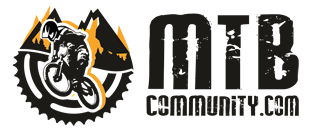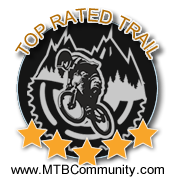Top 10 Upgrades for your New Mountain Bike

So you finally took the plunge and decided to get that new bike or at least a newer used bike to replace the relic you were previously riding. But now that you have the new bike you start to think to yourself "what can I do to make it better"? It's just like guys and cars where stock is never good enough and there is always room for improvement to make it lighter, faster or look better.
So assuming you have any money left, what upgrades should you do to get the most bang for your buck? Well it's not always about the money but rather what you get for the money because the good upgrades are not always cheap! So we have come up with our top 10 bike upgrades for your new bike and when making this list we assume that money is no object. Because it isn't when it comes to your bike right?
1. Carbon Wheels
Carbon wheels are starting to become the norm these days and more and more bike manufacturers are offering them on their higher end models. But what if you have an older bike or not the top of the line model? Well if you have the cash you can get yourself a set for around $1200 and up unless you buy them used of course. Carbon wheels will make the overall weight of the bike lighter, reduce rolling resistance, make climbing easier and perform better over rough terrain because of the stiffness. Just make sure you get the right size for your bike and check the internal and external wheel width and match the hub specs to fit your frame and fork.
2. Carbon Handlebars\Wider Handlebars
If there is one part of your bike that you get personal with it's the handlebars. Between them and the pedals they keep you on your bike and keep you in control when things get rough. If your bike came with aluminum handlebars you might want to think of going to carbon instead. Carbon bars are lighter than aluminum of course and they are also stiffer and offer better damping or absorbing vibration when things get rough. Then if you are upgrading your bars you might want to go wider at the same time depending on what you are used to and what width your current handlebars are.
3. Pedals
Just like handlebars your pedals help keep you on the bike so if they are garbage your riding might end up that way too. If you use flat pedals you want something that is light, thin and has a good bite such as the e*thirteen LG1+ or Anvl Tilt pedals. Just make sure the platform size suits your foot size and be sure to get a good pair of mountain biking shoes like the Five Ten Freeriders.
4. Dropper Seat Post
Now that dropper seat posts have been out for some time it's hard to imagine ever riding without one. Some of the lower end new bikes won't come with one or will come with a below average model so getting a nice dropper post is essential. A dropper seat post will let you adjust the height of the seat by raising or lowering the seat post on demand. So when you are ready to hit the downhill after the climb you just push the button and down the seat goes.
5. Tires
Just like with cars, tires are what keep you stuck to the road, ummm I mean trail so having the right tires for your trails and riding style is essential. You want pick something with the right tread pattern, compound and width to get the job done. Lately people have been going wider than ever to get that traction around corners and handle those fast downhills with rocks and sharp turns. Most people usually end up trying a few different ones before finding the one that does the best job for them.
6. Going Tubeless
If you are getting some new tires then you might as well go tubeless. Tubeless means you don't run an inner tube in your tire but rather the tire itself holds the air. Most newer wheels and tires are tubeless ready meaning they are tubeless compatible. Even if they are not tubeless ready doesn't mean they can't be converted. What most people do is add a liquid sealant to the inside of their tires to help them seal and also fill holes caused by thorns and so on so you don't end up having to put a tube in your tire if you get a flat.
7. Grips
Going back to how important it is to have the right components keeping you on your bike are the grips since that's what your hands are actually holding on to. Grips come in all different compounds and materials as well as grip patterns. Some people like thin grips so they feel the bars and others like thick grips for the extra cushion. Since they are reasonably cheap you can try out a few brands to find the one you like. Or you can just go to the bike show and squeeze a few of them. We really like the ODI Rouge grips and they are very affordable.
8. Drivetrain Upgrade
When it comes to getting up those steep hills it's all about having the proper gearing. Back in the old days you would have 27 speed bikes with 3 chainrings up front and a cassette with 9 rings in the back. This is known as a 3 X 9. Then things went to a 2 X 10 and then to a 1 X 11 with the 1 X 12 becoming the new standard. Many people like not having a front derailleur to save on weight and to not have to worry about shifting gears in the front and rear. If you get a bike with an older drivetrain setup then you can upgrade it by going to a 1 X 12 but keep in mind you will need to buy the derailleur, shifter, cassette, chain and chainring to make it all work.
9. Seat
If you like to do those longer rides then having the right seat (saddle) is very important. You don't want to be going numb down there while doing that long steep climb. There are so many seats to choose from that it is one of those upgrades that is hard to do right the first time. Some seats are wide, some are narrow, some have carbon rails, some are super heavy and so on. One thing you can do is borrow a friends bike and if you like their seat maybe you can start with getting the same one.
10. Fork or Shock Upgrade
If you like to get rough when it comes to riding then having the right suspension is a must. If you just do cross country rides on fire roads then pretty much anything will do the job. Once you start hitting the rocky stuff or taking jumps or drops then you will start to notice if your fork or shock is not up to the job. A fork upgrade is not cheap so do your homework and make sure it will fit on your bike. If you start changing the travel too much it will throw off the bike's geometry so keep that in mind. Rear shock upgrades are not as cheap but you still need to make sure the fit is right. You can also have your suspension tuned by places like PUSH to save some money over getting something new yet still improving the bikes performance.
Posted by Jim Bernstein


